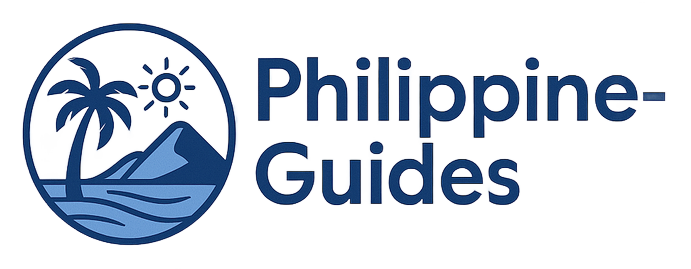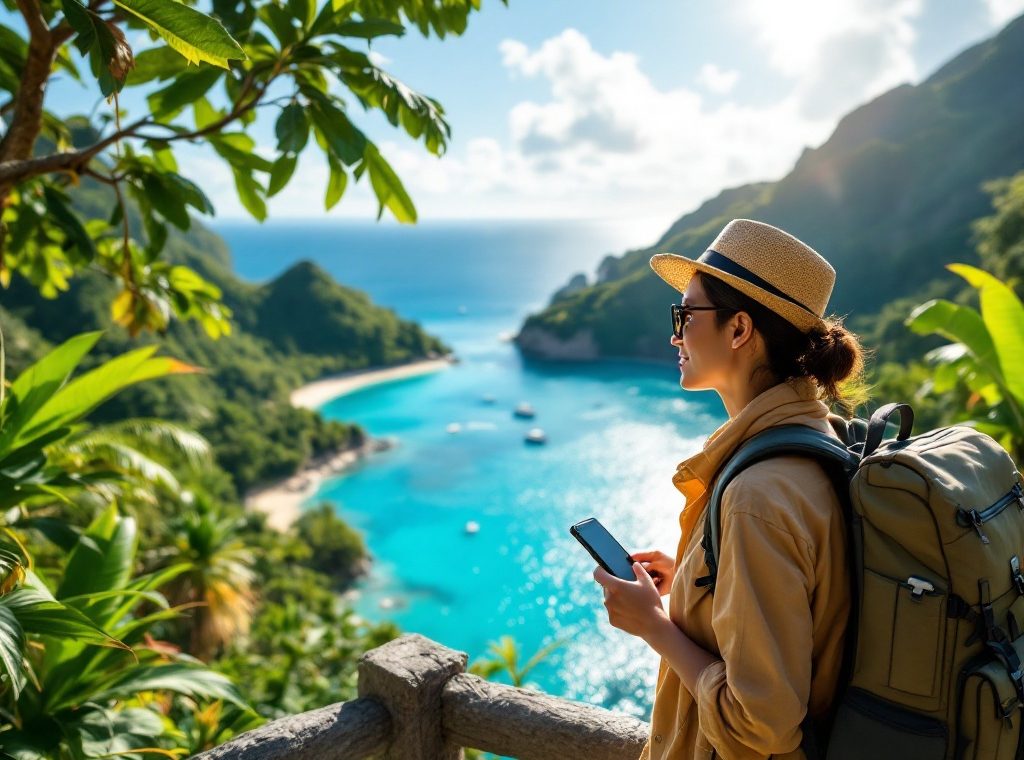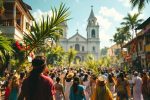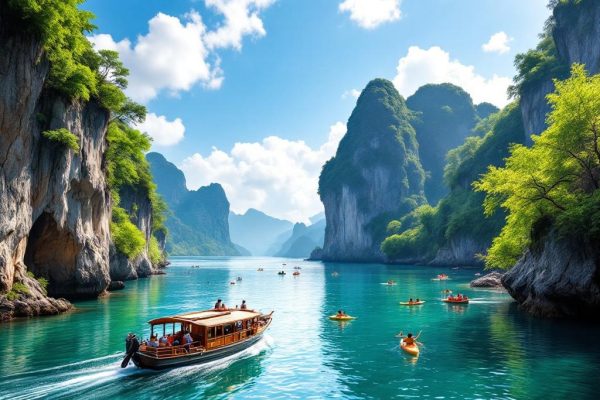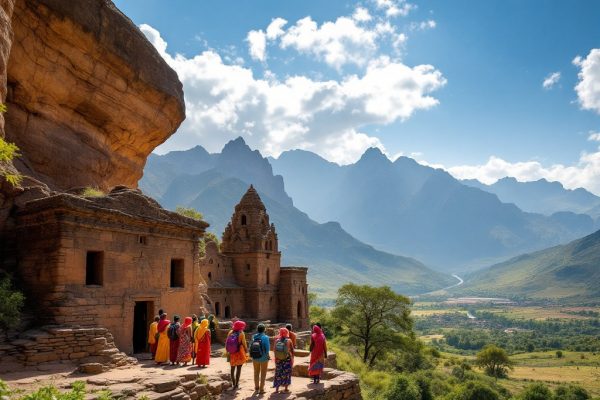How to Have a Safe Trip in the Philippines
Planning a trip to the beautiful Philippines? A Level 2 Travel Advisory is in effect, so understanding the safety landscape is crucial for a worry-free adventure. This guide covers key safety concerns, from crime and terrorism to natural disasters like typhoons and earthquakes. Learn how to protect yourself from health risks like dengue fever and how to prepare for emergencies. Discover essential tips for safe transportation, hotel security, and staying informed about current events. Empower yourself with the knowledge to navigate the Philippines safely and confidently. Read on to ensure your trip is both memorable and secure.
Important information

- The U.S. government has issued a Level 2 Travel Advisory for the Philippines due to crime, terrorism, civil unrest, and kidnapping. Avoid the Sulu Archipelago, Marawi City, and reconsider travel to other areas of Mindanao.
- Consult your doctor about necessary vaccinations (e.g., Hepatitis A, Typhoid, Malaria) and pack prescription medications and a first-aid kit.
- Protect yourself from mosquito-borne illnesses (dengue, malaria, Zika) by using insect repellent and mosquito nets. Drink bottled or boiled water and consume food from reputable establishments.
- Stay informed about current events via local media. Enroll in the Smart Traveler Enrollment Program (STEP) for alerts and updates.
- Prepare for natural disasters (typhoons, earthquakes) by familiarizing yourself with evacuation plans and having an emergency kit. Monitor PAGASA and PHIVOLCS for weather and volcano updates, respectively.
Philippines Travel Advisory
Understanding Travel Safety in the Philippines Exercise increased caution when traveling in the Philippines due to safety and security concerns. The U.S. government has issued a Level 2 Travel Advisory, citing potential risks such as crime, terrorism, and civil unrest. Stay informed about current events and prioritize your safety. Philippines Travel Advisory Level Travel to the Philippines requires increased caution due to a Level 2 Travel Advisory. Crime, terrorism, and civil unrest pose significant safety risks. Kidnapping is a genuine threat in certain regions. Stay vigilant and aware of your surroundings at all times. Common Safety Concerns: Crime, Terrorism, and Civil Unrest The Philippines experiences regular violent crime and the potential for terrorist attacks nationwide. Civil unrest also presents a safety risk, so it’s advisable to avoid demonstrations, as they can become violent.
Regions to Avoid: Sulu Archipelago, Marawi City, and Mindanao
The Sulu Archipelago, including the southern Sulu Sea, is extremely dangerous due to crime, terrorism, civil unrest, and kidnapping. The U.S. government’s ability to provide emergency services in these regions is limited, so avoid travel if possible.
Marawi City in Mindanao also presents significant risks, particularly from terrorism and civil unrest. Travel to other areas of Mindanao should be reconsidered due to similar dangers.
Importance of Monitoring Local Media
Stay informed about current events in the Philippines by checking local news outlets and social media. This will help you stay safe and adjust your travel plans as needed. For example, you’ll be better prepared for protests, emerging threats, or other unexpected events. Being aware empowers you to make informed decisions and enhances your safety during your trip.
Ensuring Personal Safety During Your Trip
Enhance your safety by staying aware of your surroundings and maintaining a low profile.
Establish a communication plan with family and friends back home.
Carry a passport copy for convenience, but secure your original documents at your hotel.
Familiarize yourself with local emergency numbers and the location of your nearest embassy or consulate.
Consider travel insurance to cover potential medical emergencies, evacuations, or lost luggage.
Hotel Safety and Belongings Security
Utilize the hotel safe to safeguard valuable items such as important documents, money, and electronic devices.
Ensure your hotel room door is locked at all times, even when you are inside.
Exercise discretion regarding your travel plans and avoid publicly displaying expensive items.
For enhanced security, consider using luggage locks.
Night Safety in Tourist Areas
Stay vigilant in tourist areas after dark. Walk on well-lit streets with other people whenever possible. Avoid unfamiliar or poorly lit areas, especially at night, to enhance your safety.
Avoiding Demonstrations and Large Gatherings
Large gatherings and demonstrations in the Philippines can be unpredictable and pose safety risks. Travelers should avoid these events and monitor local media for updates on potential civil unrest. If you find yourself caught in a demonstration, quickly seek a safe location, such as a nearby business or your accommodation.
Using Grab Taxi and Public Transportation Safely
Grab provides a safe ride-hailing alternative to public transport in the Philippines. GPS tracking and driver identification features enhance safety. If you choose public transport, opt for reputable bus companies and authorized taxis. Make sure the taxi meter is running or agree on the fare beforehand. Be aware of your belongings, especially in crowded buses and jeepneys. Your hotel can often arrange transport, particularly for longer journeys, providing increased reliability.
Utilizing Local Guides for a Safe Experience
Local guides enhance travel safety in several ways. They offer valuable insights into local customs and warn about potential hazards, fostering positive community interactions. Their navigation skills help travelers explore unfamiliar areas, minimizing the risks of getting lost or encountering unsafe situations.
Health and Hygiene Precautions
Safeguard your health during your Philippine trip by taking these precautions. Drink only bottled or boiled water to stay hydrated and prevent illness. Be mindful of your food choices to minimize the risk of foodborne illnesses. Here’s a helpful list to ensure a healthy trip:
- Consume bottled or boiled water, avoiding tap water to prevent waterborne illnesses.
- Choose food from reputable establishments to minimize the risk of foodborne illnesses.
- Pack necessary medications and a basic first-aid kit for common ailments.
Travel Health Information and Vaccinations
Planning a trip to the Philippines? A quick chat with your doctor is an excellent first step. Ensure your routine vaccinations, like measles and polio, are up to date. Depending on your itinerary, you might need additional vaccines such as Hepatitis A, Typhoid, and Malaria. Remember to pack any prescription medications and a basic first-aid kit. It’s always wise to be prepared.
Consult your doctor. Discuss your travel plans and ensure your routine vaccinations are current.
Consider additional vaccinations. Depending on your itinerary, you may need vaccines for Hepatitis A, Typhoid, and Malaria.
Pack essential medications. Bring any necessary prescription medications along with a basic first-aid kit.
Managing Food Safety and Avoiding Foodborne Diseases
Safeguard your health by taking simple precautions against waterborne illnesses. Drink bottled or boiled water, avoiding tap water altogether. Consume freshly cooked food to minimize the risk of diseases like cholera, typhoid, and hepatitis A. Select reputable restaurants and vendors with good hygiene practices. For added safety, peel your own fruits and vegetables.
- Drink bottled or boiled water, avoiding tap water,
- consume freshly cooked food to minimize the risk of diseases like cholera, typhoid, and hepatitis A,
- select reputable restaurants and vendors with good hygiene practices,
- peel your own fruits and vegetables.
Essential Medications to Carry
When packing for your trip, don’t forget essential medications. Pack pain relievers, anti-diarrheal medication, antihistamines, and motion sickness remedies. Also include antiseptic wipes, insect repellent, and any personal prescriptions.
Travel Insurance for Health Risks
Before embarking on your journey, safeguard your health and finances with travel insurance. A comprehensive policy should cover medical expenses and emergency evacuation. Adventure seekers partaking in activities like scuba diving or hiking should ensure these are specifically included in their coverage. If your travels take you to higher-risk regions, such as central or western Mindanao, verify your policy addresses any unique requirements. Always carry your insurance details and emergency contacts. Consult your doctor about recommended vaccinations, including measles, polio, and dengue fever. Pack an adequate supply of any prescription medications, along with copies of your prescriptions.
Secure comprehensive travel insurance that covers medical expenses and emergency evacuation.
If you plan on participating in adventure activities like scuba diving or hiking, ensure your policy covers these specifically.
For travel to higher-risk areas, such as central or western Mindanao, confirm your policy meets all requirements.
Keep your insurance details and emergency contacts with you at all times.
Consult your doctor about recommended vaccinations, such as measles, polio, and dengue fever.
Pack sufficient prescription medication, along with copies of your prescriptions.
Natural and Environmental Risks
The Philippines faces various natural hazards, including typhoons, earthquakes, floods, landslides, and volcanic eruptions. Staying informed and monitoring weather updates from PAGASA (Philippine Atmospheric, Geophysical and Astronomical Services Administration) is crucial. A comprehensive emergency plan should include communication strategies, evacuation routes, and essential supplies.
- Monitor weather updates from PAGASA.
- Develop an emergency plan with communication and evacuation strategies.
- Prepare a list of essential supplies.
While the rainy season typically lasts from June to November, earthquakes are a constant threat due to the country’s location within the Pacific Ring of Fire. Coastal earthquakes can trigger tsunamis, so vigilance is key. The Philippines also has several active volcanoes, such as Mayon, Taal, and Pinatubo. Check advisories from PHIVOLCS (Philippine Institute of Volcanology and Seismology) before visiting volcanic areas.
- Be aware of earthquake and tsunami risks.
- Check PHIVOLCS advisories before visiting volcanic areas.
Mosquito-borne illnesses like dengue, malaria, and Zika virus are another health concern. Protecting yourself with insect repellent and mosquito nets is essential. Consider antimalarial medication for travel to high-risk areas. Consulting your doctor about necessary vaccinations and other health precautions is always recommended.
- Use insect repellent and mosquito nets.
- Consider antimalarial medication for high-risk areas.
- Consult your doctor about vaccinations and health precautions.
Preparedness for Natural Disasters: Typhoons and Earthquakes
Staying safe in the Philippines requires preparation due to frequent typhoons and earthquakes. Familiarize yourself with your hotel’s evacuation plan and keep emergency contacts easily accessible. Monitor local news for updates. A well-stocked emergency kit is essential for your safety. If you are in a high-risk area, pre-plan evacuation routes and understand the necessary procedures. These precautions can be lifesaving.
Know your hotel’s evacuation plan. Locate the nearest exits and assembly points.
Keep emergency contacts readily available. Save important numbers in your phone and write them down in a notebook.
Monitor local news and weather reports. Stay updated on potential hazards and official advisories.
Prepare a well-stocked emergency kit. Include essentials like water, food, first-aid supplies, and a flashlight.
If in a high-risk location, pre-plan evacuation routes. Identify safe areas and potential escape paths.
Safety Precautions for Tropical Diseases
Before traveling to the Philippines, consult your doctor about recommended vaccinations to protect your health. Pack DEET insect repellent to prevent mosquito-borne illnesses like dengue fever, malaria, and Zika. Avoid tap water and drink only bottled or purified water. Eat thoroughly cooked food and be cautious with street vendors to prevent foodborne illnesses. If you experience fever, diarrhea, or a rash, seek immediate medical attention.
Additional Travel Tips for a Safe Journey
Prepare a comprehensive packing list to ensure you have all the essentials.
Purchase a local SIM card upon arrival for convenient and affordable communication.
Keep important contact information readily available, including local emergency services and the U.S. Embassy in Manila.
Enroll in the Smart Traveler Enrollment Program (STEP) to receive updates and alerts.
Review the latest Country Security Report for the Philippines to stay aware of current conditions.
Develop a backup plan for potential emergencies or travel disruptions.
Traveler’s Checklist and SIM Card Tips
Pack smart using a traveler’s checklist to keep your essentials organized. One vital item is a local SIM card. Upon arriving in the Philippines, acquire one immediately for easy access to maps, communication, and emergency calls. This crucial item enhances your safety by minimizing the need to seek assistance from strangers. Having a local SIM card offers several advantages:
- easy access to navigation apps,
- seamless communication with local contacts and back home,
- quick access to emergency services.
Emergency Contacts and U.S. Embassy Manila
In emergencies, contact local authorities or the U.S. Embassy in Manila at 1201 Roxas Blvd, Ermita, Manila, 1000 Metro Manila, Philippines (+63 2 5301 2000). They can provide valuable assistance. Advance planning is essential. A solid contingency plan should include:
- local emergency numbers,
- nearby medical facilities,
- access to funds and crucial documents.
Enrolling in the Smart Traveler Enrollment Program (STEP)
Planning a trip to the Philippines? Enroll in the free Smart Traveler Enrollment Program (STEP). STEP keeps U.S. citizens and nationals abroad informed with important safety information from the U.S. Embassy specific to your destination. It also helps the Embassy contact you in an emergency. Enroll today to stay informed and safe.
Staying Informed with the Country Security Report
Before, during, and after your trip to the Philippines, prioritize your safety by reviewing the Country Security Report. This report provides crucial updates on safety and security, including potential crime, terrorism, civil unrest, health concerns, and natural disaster preparedness. Since conditions can change rapidly, regularly reviewing this information will contribute to a safer and more informed travel experience.
Developing a Contingency Plan for Emergencies
Preparing for emergencies in the Philippines is crucial. Follow these steps to create a comprehensive contingency plan:
Compile a list of emergency contacts. Include both local and international contacts.
Research and identify safe evacuation routes and secure locations.
Prepare a well-stocked first-aid kit. Ensure it includes any necessary medications.
Keep copies of important documents readily accessible.
Locate the nearest embassy or consulate.
Ensure you have access to funds.
Establish a reliable communication plan.
Taking these steps now will ensure a safer future.
